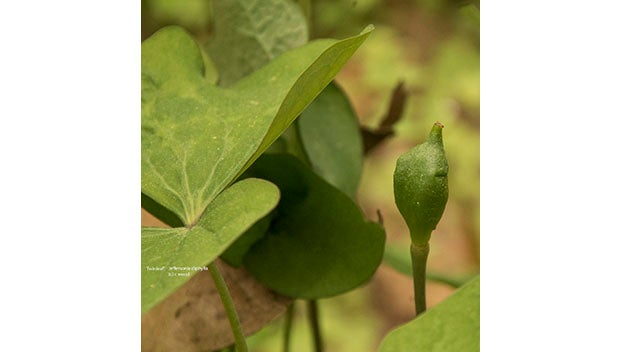Mother’s Nature Garden: In search of Twinleaf
Published 11:34 am Saturday, April 22, 2023

- Twinleaf has leaves resembling butterflies and helmet-shaped seed pods.
|
Getting your Trinity Audio player ready...
|
 The earliest spring ephemerals have finished blooming, but there’s still time to see twinleaf (Jeffersonia diphylla.) Several years ago, I was desperate to find this plant and was told that there was some at Powhatan State Park. I couldn’t find it, so a friend gave me GPS coordinates to use. I went back to the park and spent much of a morning tramping along a slope. Nothing. I must have walked around a large colony of twinleaf multiple times. Finally, someone went with me to the park and said, “There!” How could I have missed such an amazing sight! A slope covered with twinleaf in bloom is a stunning sight. In fact, it’s a stunning sight when it’s not in bloom.
The earliest spring ephemerals have finished blooming, but there’s still time to see twinleaf (Jeffersonia diphylla.) Several years ago, I was desperate to find this plant and was told that there was some at Powhatan State Park. I couldn’t find it, so a friend gave me GPS coordinates to use. I went back to the park and spent much of a morning tramping along a slope. Nothing. I must have walked around a large colony of twinleaf multiple times. Finally, someone went with me to the park and said, “There!” How could I have missed such an amazing sight! A slope covered with twinleaf in bloom is a stunning sight. In fact, it’s a stunning sight when it’s not in bloom.
Some people compare the bloom to that of bloodroot, but this plant is different. When it first emerges, it’s a deep, dark purplish color, and the leaves are folded in half. Gradually the leaves unfurl, and the color of the plant changes to bluish green. But then…those leaves. At the top of each stem is a single leaf. Yes, what appears to be a pair of identical leaves is just one leaf that’s nearly divided in half, hence the common name twinleaf. The leaves have been compared to fanciful butterfly wings.
The fragile white flowers have eight petals and four shorter petal-like sepals. They shatter easily in the wind and only last several days. Even the seed capsules that follow the flowers are distinctive. They’re hinged along a horizontal line, so that when the capsules split open, they have the appearance of a vase with a lid or perhaps a helmet. There are 10 to 25 seeds in each capsule, and they are spread by ants.
The genus name honors Thomas Jefferson. There is only one other species in the genus, Jeffersonia dubia, which has bluish-lavender blooms and is an Asian native. Both J diphylla and J dubia are members of the Barberry Family.
As might be expected of such a unique plant, twinleaf has several interesting common names, including rheumatism root, helmet pod, and ground squirrel-pea. Twinleaf has been used in traditional medicine to treat dropsy, rheumatism, infections, sores, and diarrhea.
Twinleaf was the 1999 Virginia Native Plant Society Wildflower of the Year. It’s a lovely addition to the shade garden where it can be slow to emerge in spring, but it’s well worth the wait.
DR. CYNTHIA WOOD is a master gardener who writes two columns for The Herald. Her email address is cynthia.crewe23930@gmail.com.




